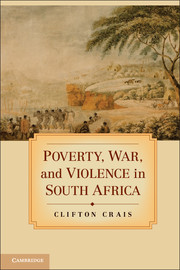Conclusion
Published online by Cambridge University Press: 05 June 2012
Summary
The epochal starvation that accompanied Europe's subjugation of other peoples had ended by the early years of the twentieth century. The Eastern Cape was no longer “covered with the skulls” of the defeated and the starved. Instead, the sick, the indebted, the malnourished, and the thousands living by their wit's end now populated a radically new colonial landscape.
This book has argued that violence lay at the very center of South African history, including and especially the creation of modern rural poverty. It is less the story of the effects of capitalism's spread, or of narratives based on abstract models of economic change, than an exploration of violence and its consequences. Europeans and their African auxiliaries killed thousands of people and confiscated or destroyed immense amounts of African property. Displacement, starvation, and famine very frequently followed quickly on the heels of colonial conquest. New agricultural patterns emerged out of violence, particularly extensive cultivation and reliance on maize and the increasing commoditization of food. What unfolded in the Eastern Cape took place across much of Africa in the nineteenth century.
- Type
- Chapter
- Information
- Poverty, War, and Violence in South Africa , pp. 150 - 162Publisher: Cambridge University PressPrint publication year: 2011

